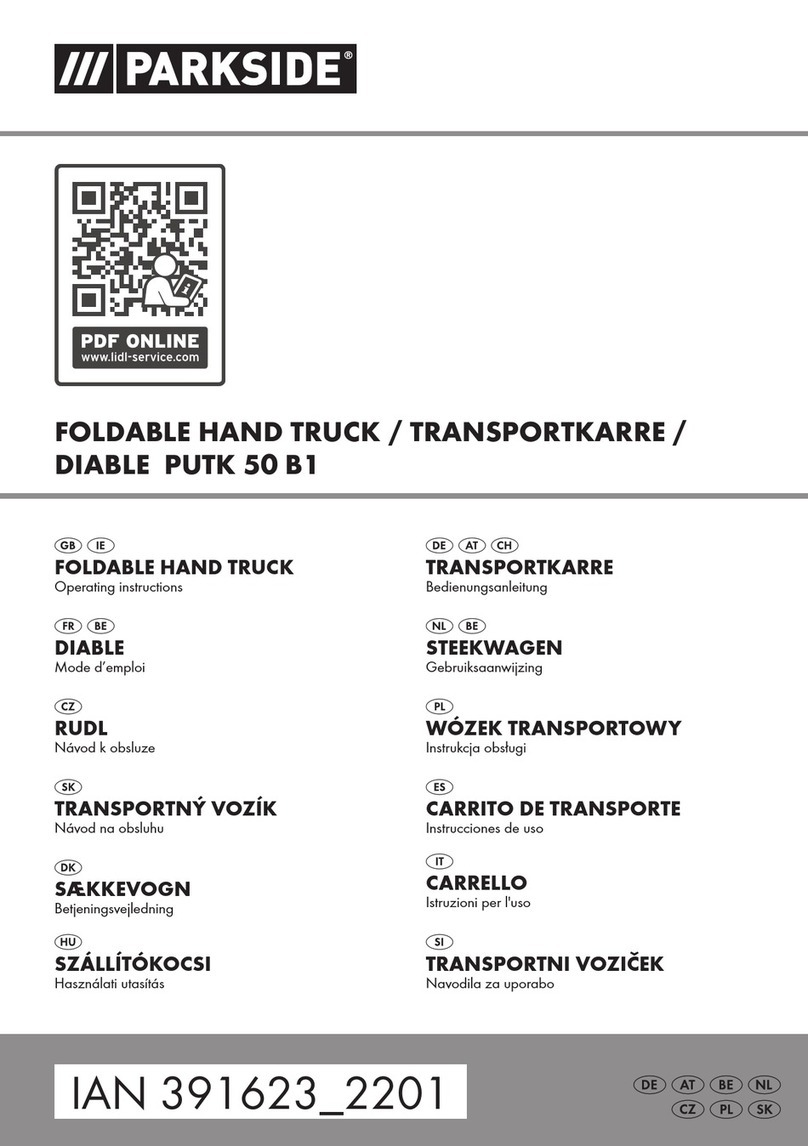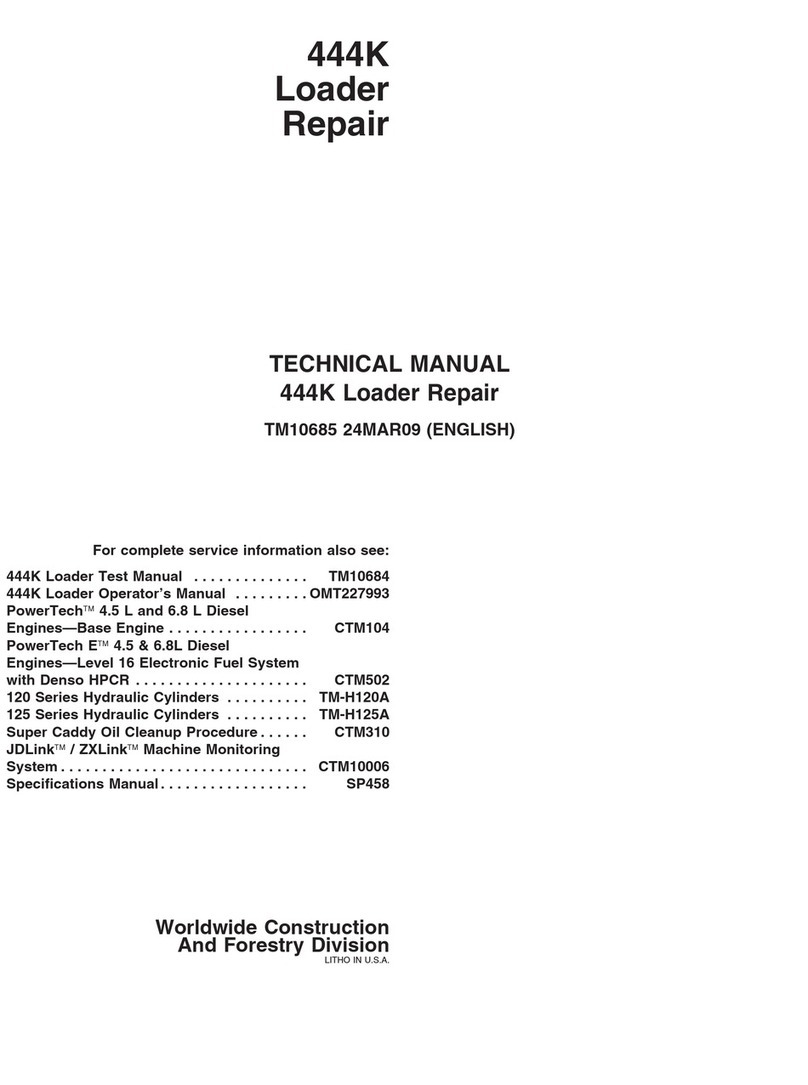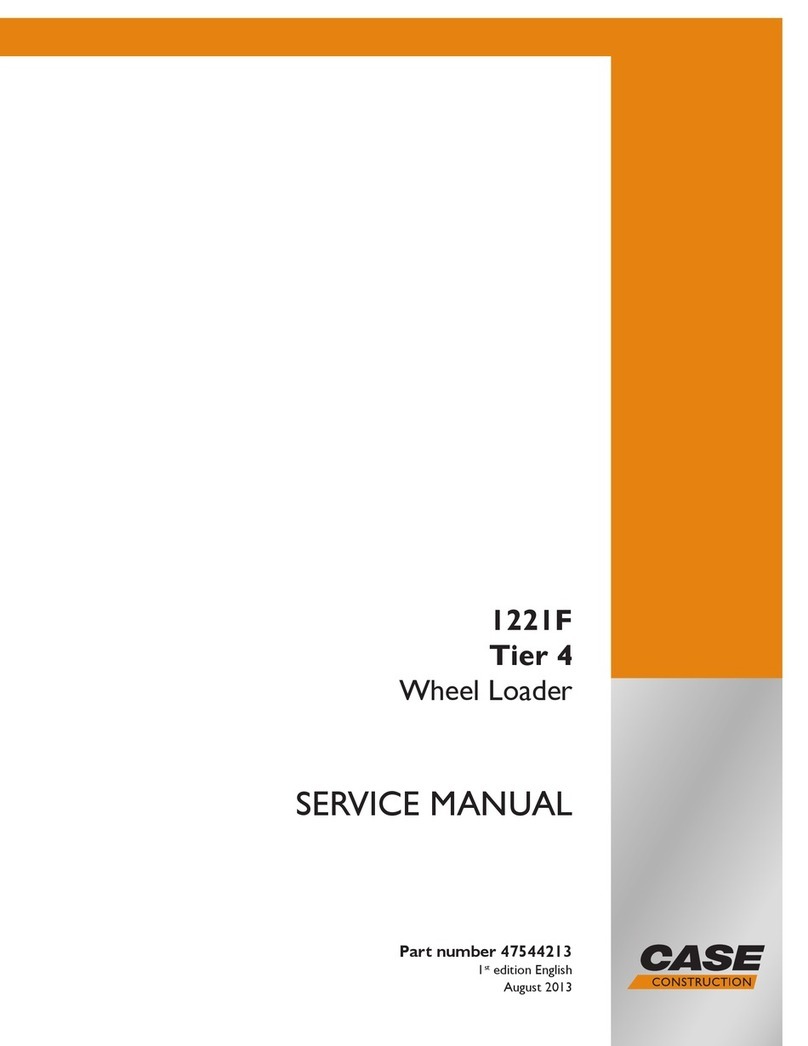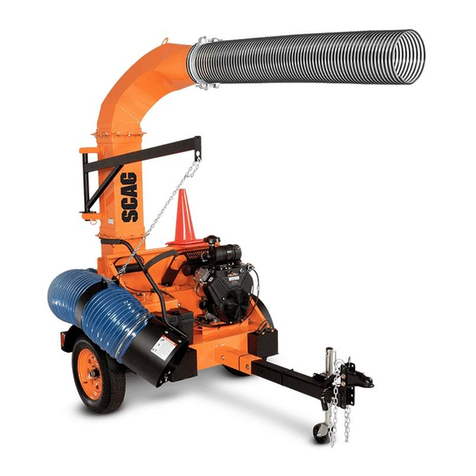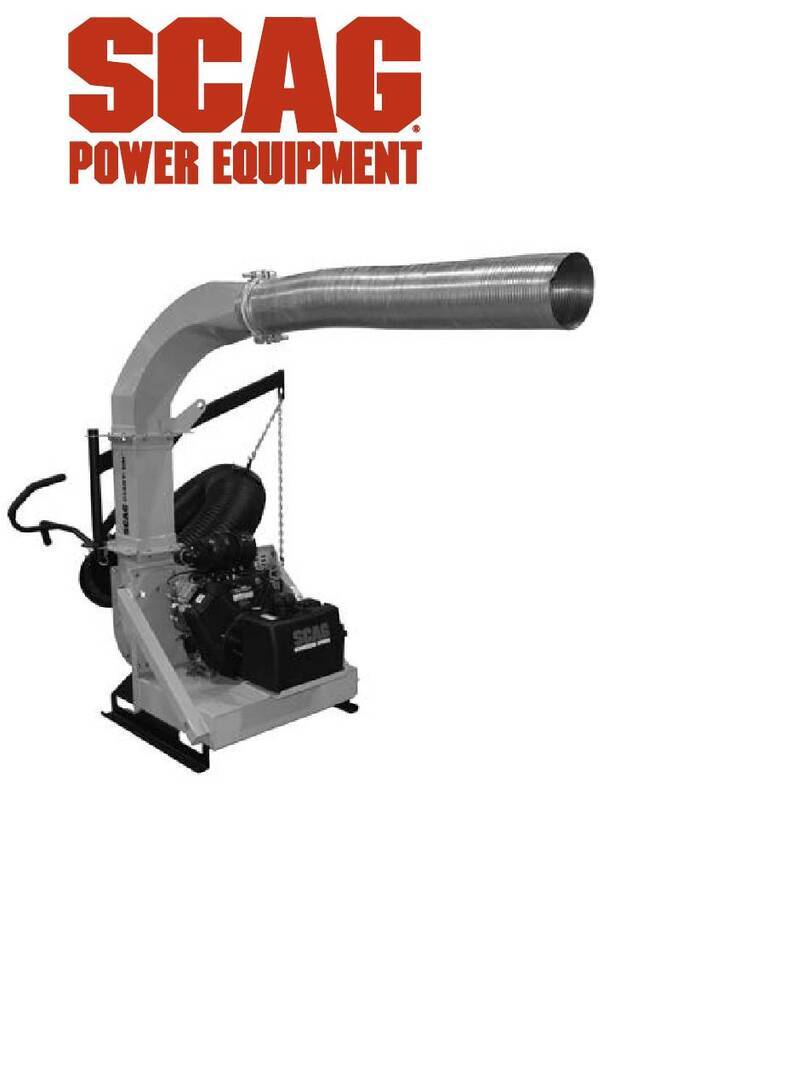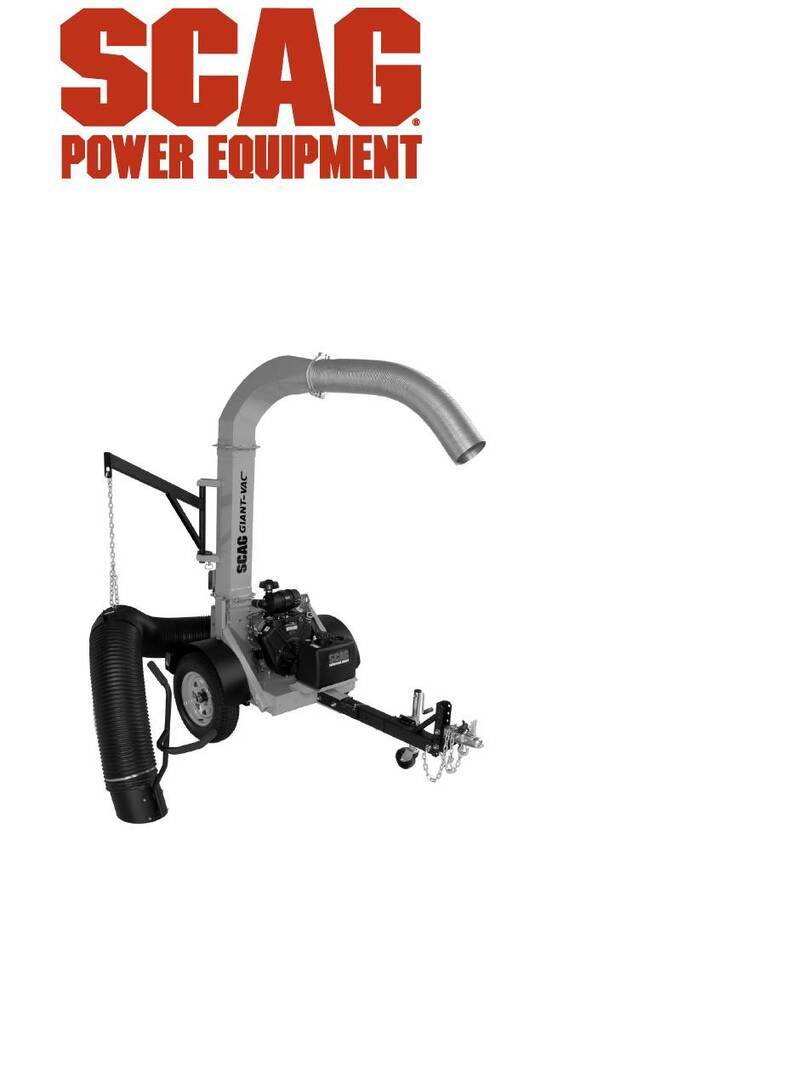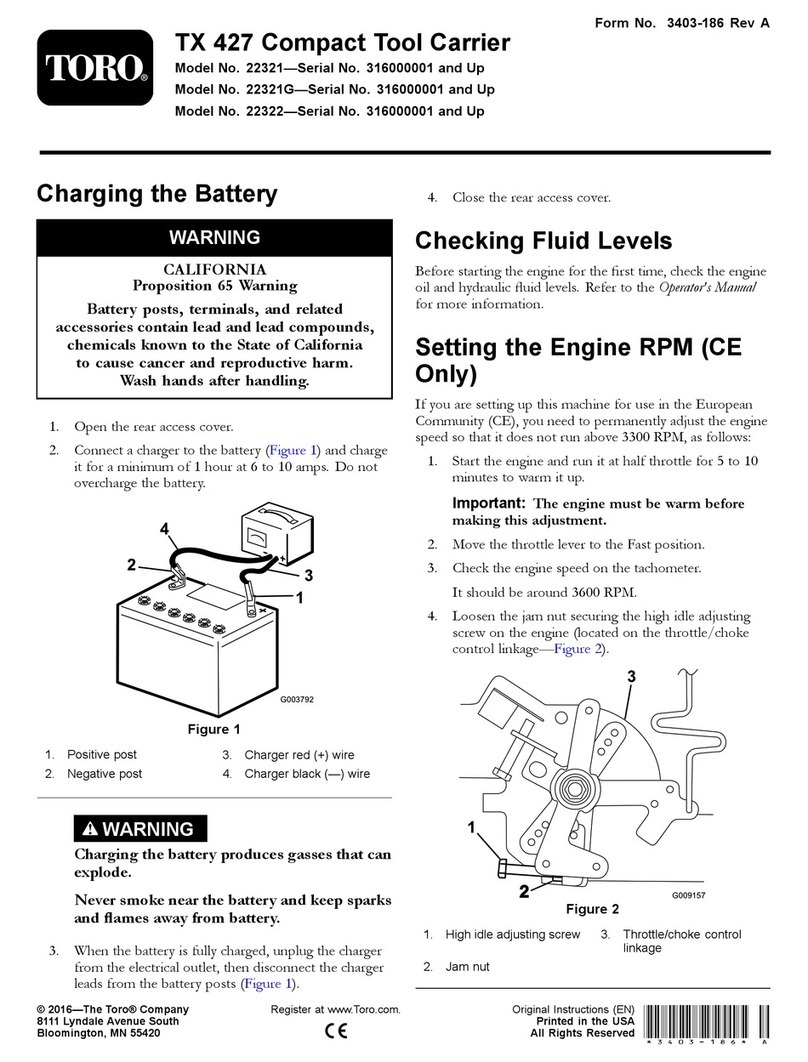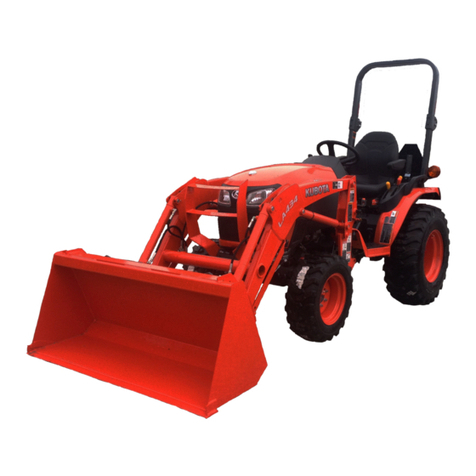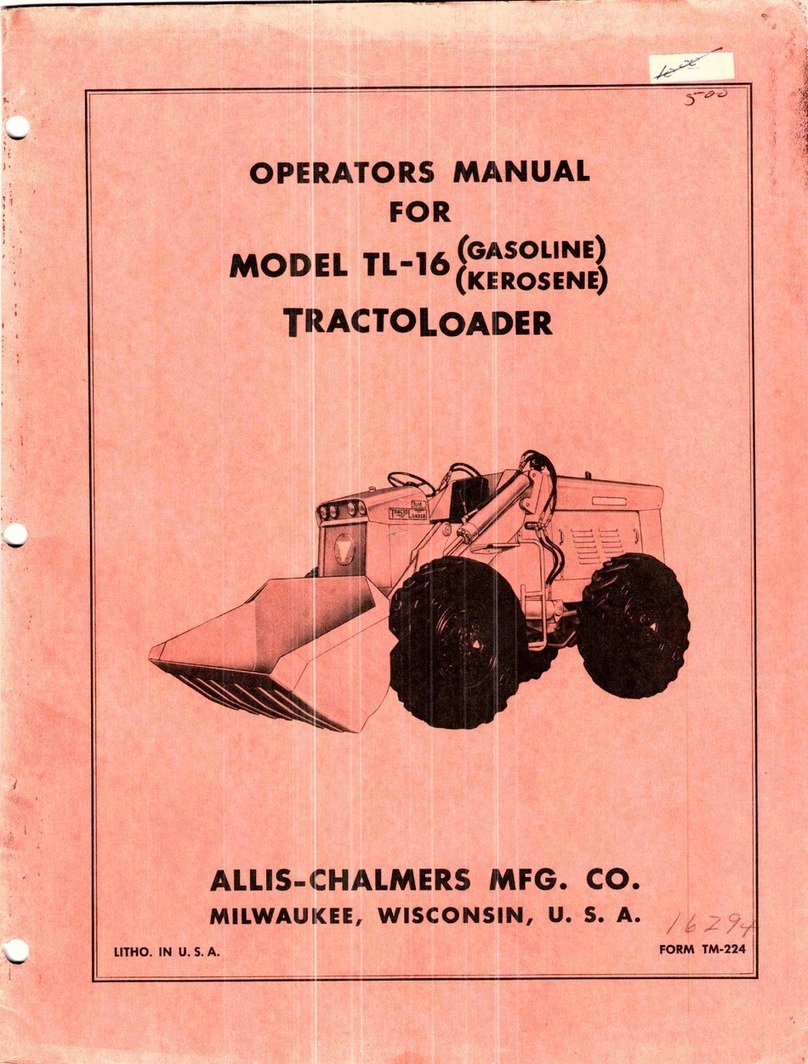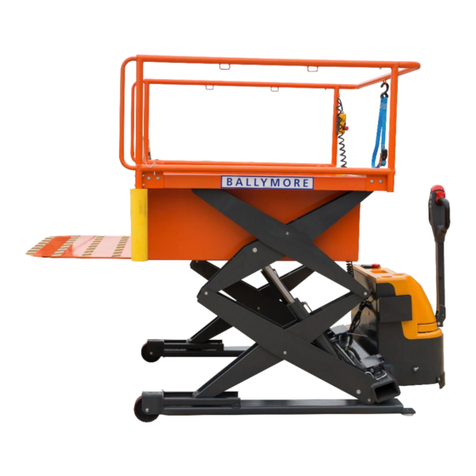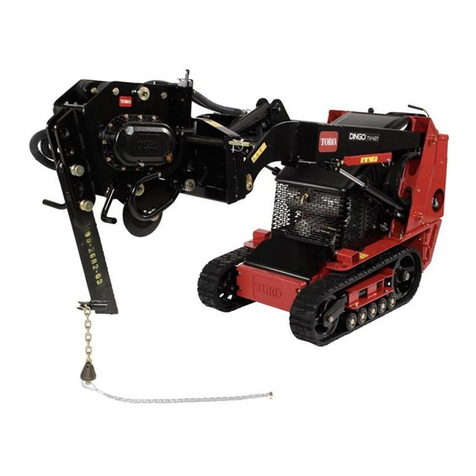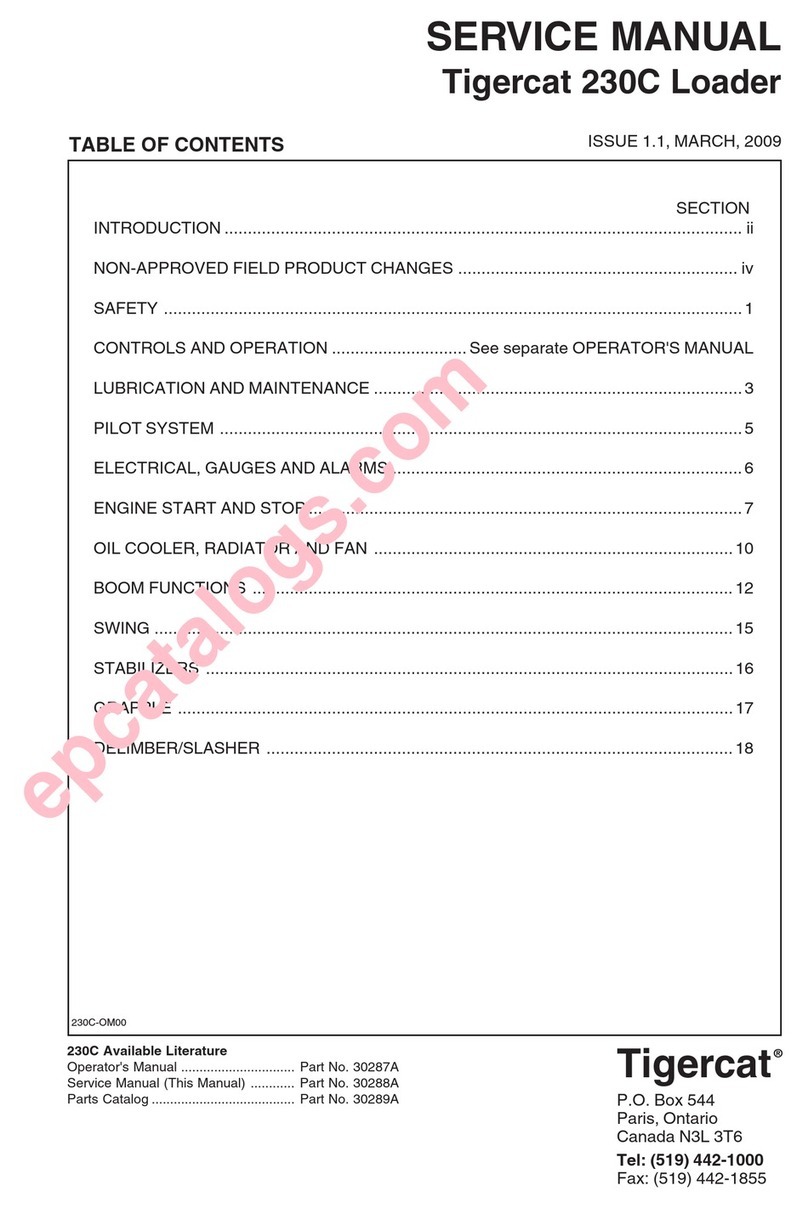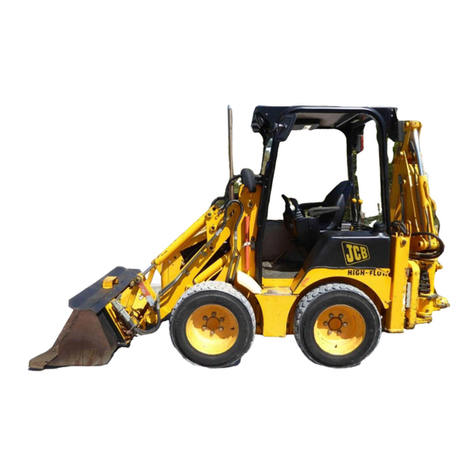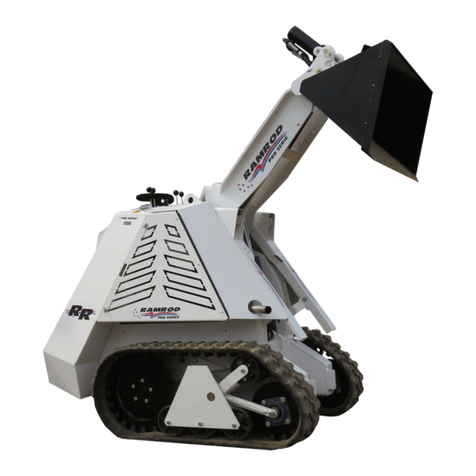
4
RSection 2
4. Do not operate when children and/or others are
present. Keep children out of the work area and in
the watchful care of a responsible adult other than
the operator. Be alert and turn machine off if a child
enters the area.
5. DO NOT allow children to ride or play on the
machine, it is not a toy.
6. Keep keys stored in a safe location when the Truck
Loader is not in use; i.e. where they are inaccessible
to children.
7. DO NOT operate the machine under the influence of
alcohol or drugs.
8. Before and during reverse operation, look behind
and down for small children and/or pets.
9. If the operator(s) or mechanic(s) cannot read
English, it is the owner's responsibility to explain this
material to them.
10. DO NOT wear loose fitting clothing. Loose clothing,
jewelry or long hair could get tangled in moving
parts. Do not operate the machine wearing shorts;
always wear adequate protective clothing including
long pants. Wearing safety glasses, safety shoes
and a helmet is advisable and is required by some
local ordinances and insurance regulations.
WARNING
Always wear hearing protection. Operating this
machine over prolonged periods of time can
cause loss of hearing.
11. Keep the machine and attachments in good
operating condition. Keep all shields and safety
devices in place. If a shield, safety device or decal
is defective or damaged, repair or replace it before
operating the machine.
WARNING
Belts, belt guards, hoses, intake nozzles and
discharge tubes are subject to wear, damage and/
or deterioration, which could expose moving parts
or allow objects to be thrown. Frequently check
components and replace with manufacturer's
recommended parts when necessary.
12. Thoroughly inspect the area where the equipment is
to be used and remove all foreign objects.
13. Evaluate the terrain to determine what accessories
and attachments are needed to properly and safely
perform the job. Use only approved attachments and
accessories.
14. See Section 5.3 ENGINE FUEL SYSTEM for fueling
procedure.
15. Use a funnel or spout to prevent spillage.
16. DO NOT start the engine until any spilled fuel has
been cleaned up or has evaporated.
17. Never refuel indoors.
18. Keep flammable objects (cigarettes, matches, etc.),
open flames and sparks away from the fuel tank and
fuel container. Use only approved containers.
WARNING
Fuel is highly flammable. Take the following
precautions:
Store fuel in containers specically designed for
this purpose.
Refuel outdoors only and do not smoke while
refueling.
Add fuel before starting the engine. Never remove
the cap on the fuel tank or add fuel while the
engine is running or when the engine is hot.
If fuel is spilled, do not attempt to start the engine
but move the machine away from the area of
spillage and avoid creating any source of ignition
until fuel vapors have disappeared.
Replace all fuel tank and container caps securely.
19. Check the inlet hose, discharge tube, wear liners,
impellers, debris receiver box and components
frequently for signs of wear or deterioration and
replace as needed to prevent injury from thrown
objects going through weak or torn spots.
20. Never attempt to make any adjustments while the
engine is running unless specifically recommended
by the manufacturer.
21. Check the engine mounting bolts at frequent
intervals for proper tightness.
22. Use care when hooking or unhooking the machine to
a tow vehicle.

